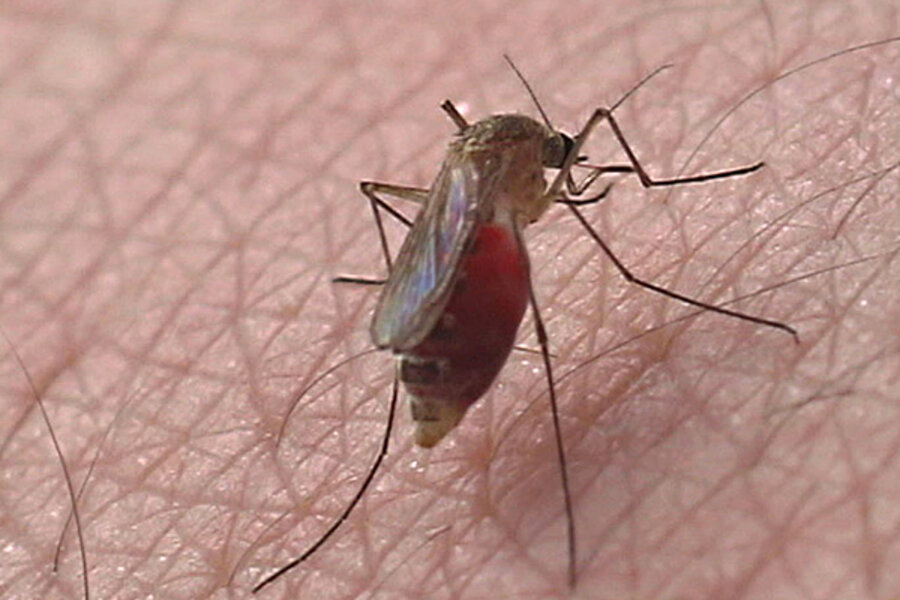How military might benefit from study of hard-to-kill mosquitoes
Loading...
Did you ever wonder what happens to mosquitoes caught in a rainstorm? If a big, fat raindrop smashes into a delicate flying mosquito, the bug is toast, right?
Not if recent experiments by a team of engineers and biologists are any indication. The researchers found that mosquitoes are adept at surviving such collisions, and their work sheds light on why.
That’s good news for mosquitoes, and, say the researchers, it could be useful for humans.
The information could feed into designs for a new generation of tiny robotic fliers tailored for military-reconnaissance or for search-and-rescue work, says David Hu, a mechanical engineer at Georgia Tech in Atlanta who led the effort. The results appeared Monday in the journal Proceedings of the National Academy of Sciences.
Larger drones already have demonstrated their military usefulness in seeking and destroying military targets. Reconnaissance versions fly the border between the US and Mexico and are of keen interest to some big-city police departments. Insect-like robotic fliers would have the ability to go where the larger craft can't – inside buildings occupied by snipers or explosives, or flitting into gaps in debris in a collapsed building to look for survivors.
But it remains unclear how practical such tiny fliers might be.
"There's still a long way to go, even having these vehicles work for short distances," Dr. Hu says. A windy day, or even eddies in the breeze generated as moving air encounters the corner of a house, could send the micro-sentinels flitting off in the wrong direction. Or, as in Hu's query, the tiny fliers could be vulnerable to rainfall.
Previous research had focused on wind-related disturbances to a microflier's performance. But no one had focused on rain. The only moisture-related research involving mosquito-scale insects involved pesticides. Researchers found that to work, liquid pesticides would require drops so small that they penetrate between wax-coated hairs that form a dense layer on mosquitoes, allowing the bugs to ward off water droplets.
Hu's team began by collecting a genus of mosquitoes known as Anopheles. These thrive in the tropics, where rain is frequent. The new home for the insects was a container made from clear acrylic and a mesh top. The team used a high-speed video camera to record the interactions between bug and artificial rain.
Ahead of the experiment, the researchers ran some calculations comparing the size and weight of the droplets and mosquitoes to see if the numbers might shed light on what to expect.
They found that on average, raindrops have about the same diameter as their test subjects, wingtip to wingtip. But the raindrop weighs anywhere from 2 to 50 times that of the mosquitoes. By the time the drops approach the ground, they travel at between 13 and 20 miles an hour. Proportionally, that's like an encounter between a bus and a pedestrian at up to 20 miles an hour.
"When we went into it, I think like most people we wanted to kill the mosquitoes," Hu recalls. He likens it to applying a 50-pound hammer to a 1-pound object. "How hard could it be?" he asks.
As it turned out, very hard. Indeed one could say that for the initial experiment, no mosquitoes were harmed in making their film.
The team used a water jet streaming onto the mesh top to generate rain falling at a velocity somewhat higher than typical for rain drops near the ground. Out of 20 mosquitoes in the acrylic chamber, the team nailed six. But instead of delivering a knock-out punch, the droplets merely swept the mosquitoes along with them, without injury. The mosquitoes were so light that little energy got transferred from traveling drop to target mosquito.
By the time the drop had traveled 39 millimeters – roughly 13 times the body length of its passenger – the mosquito managed to work itself free and fly away. So much for the aquatic smack-down.
In a second experiment, the team then slowed the drops to fall within the range of natural raindrops. The drops were more likely to hit the insects along the wings or legs than a direct hit on its body – glancing blows that quickly changed a bug's orientation but didn't sweep it along. That was the province of a direct hit.
In surviving the initial hit from the drop, the bugs fly to the top of the roster of organisms experiencing high acceleration force, known by its initial G, and surviving. For astronauts, fighter pilots, and other mere mortals, they can experience up to 20 Gs and survive. The absolute record-holder was the flea, which experiences 135 Gs with every leap. But with an impact from a raindrop, a mosquito can handle up to 300 Gs, the team calculates.
Although the exact mechanism remains unclear, it appears that the bugs freed themselves by raising their wings or legs, generating enough turbulence to pull them off of the drop's underside.
Still, even mosquitoes can auger in. The team noted that if the drop struck the bug too close to the ground, it didn't have enough time to free itself before a fatal impact with the ground.
In the end, a combination of a mosquito's external skeleton and its status as a featherweight kept it from falling victim to rainfall.
The lesson for engineers?
The first, says Hu, is that as you get smaller, you in effect get increased robustness in the face of a collision for free. Making the mosquitoes bigger would increase the force of collision with the rain drops, increasing the likelihood of damage. So, here is one more reason designers should make their bugs as small as possible.
The second, he adds, is that long wings and legs could ultimately prevent a microflier from joining the raindrop as it goes "splat" on the ground.








